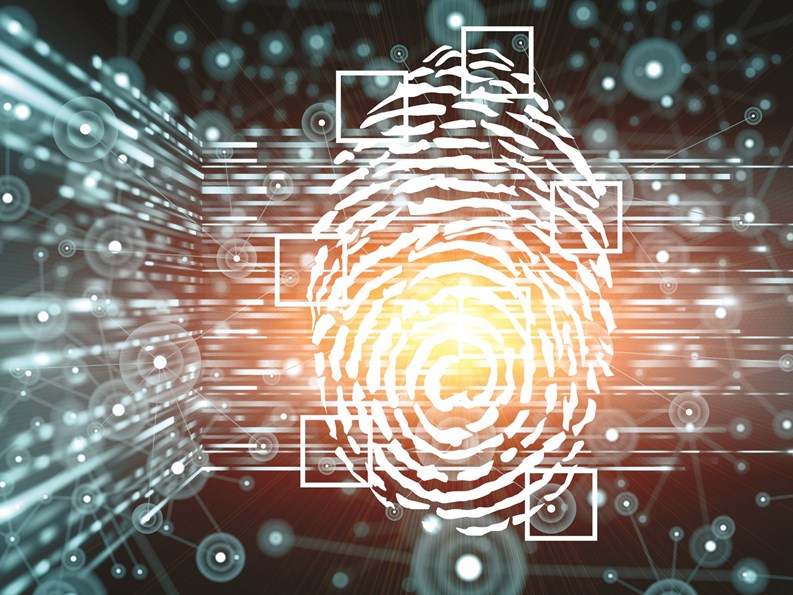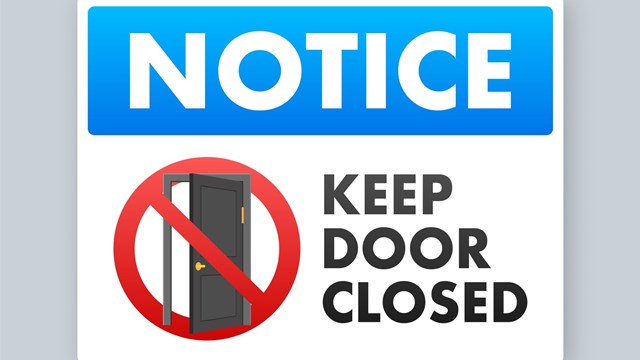These days the simple door-buzzer and intercom building security systems that were the industry standard not so long ago are going the way of the dinosaur. Like it or not, soon the stuff of science fiction films will become reality. Today, voice-recognition systems, camera networks and closed-circuit television (or CCTV) fingerprinting, and other state-of-the-art technologies are giving co-op and condo residents peace of mind while protecting them, their families, and their property from both external and internal threats.
Those systems are not so far out of reach, either. Upgrading your building's existing system to a color camera or digital recording system can be a reasonably simple affair, depending on your building's wiring. However, although cameras, biometric scanners and other such security devices can record crimes, they cannot prevent them. Therefore, the need for trained security guards to monitor high-tech equipment is stronger than ever.
Most co-ops and condos carry one of three security systems: alarm, access-control, or CCTV. According to Dr. Mark Lerner, president of EPIC Security Corp., a security provider located in Manhattan, some buildings integrate the three options. "The large buildings that have money in their budgets will generally have a variation of all three either separately or combined," Lerner says. "You don't find many buildings that don't have anything these days - most buildings have something."
"If you have a doorman, you have some sort of intercommunication," says Larry Dolin, president of American Security Systems Inc., a New York-based security solution provider. "On the doorman buildings they have basic intercoms or they use telephone entry - that is the more popular method these days." Those systems, he says, tie into the building's existing phone lines.
"What's really popular now is the video intercom," says William Polakowski, national sales manager of Siedle Communications Systems, a solution provider based in Broomall, Pennsylvania. "Everyone's adding them." Typically, he says, you can upgrade your existing wiring to audio/video without rewiring the building.
Video intercoms often secure buildings without a doorman. "You can be announced outside and your picture comes up on a screen inside the apartment," Dolin says. He says many buildings, with or without a doorman, are installing a variety of cameras throughout the building so that one person can monitor the entire place.
Digital recording, the newest feature of CCTV, stores up to thirty days worth of recording on a hard drive. The camera saves space by only recording movement. "We're trying to keep perpetrators out of the building," Dolin says. "And if anything should happen, you have a record of it." The greater clarity afforded by digital recording makes identifying intruders and going back to a specific point in time easier. Although many buildings do not yet have that system, which is the latest advance, Lerner says that many are looking into it.
Polakowski says proximity readers for keyless entry also are very popular. Those give the tenant their own card so they don't have to keep buying new keys. He says biometrics fingerprint modules are also coming onto the scene that allow residents and others with clearance to simply press their thumb or finger onto a touch-sensitive plate that scans a series of unique points in the user's fingerprint and then grants access if the points match.
Possible terrorist attacks are a growing concern for building residents. "After 9/11 there was actually a big spike in demand for security," says Lerner. The spike, which lasted for six months to a year, included upgrades to electronic systems.
"I think there's more concern, especially in the co-ops, about knowing who they let in," Polakowski says. "They want everyone to take the responsibility. If you don't know who this person is, don't let them in." He adds there's definitely been a step-up in video use since 9/11, mainly because of these renewed concerns.
Within more recent times, Lerner says, "the real threat has been from [what we] were most concerned with before 9/11: theft, vandalism, and assault."
"I think it's both," Dolin agrees. He says that although concerns have been enhanced since 9/11, residents share other fears as well. "You're concerned about an intruder from the outside and you're also concerned about your problems from within: kids vandalizing, throwing things off the roof, breaking into laundry machines, graffiti. A lot of the criminal concerns have to be from within sometimes, not always from without."
Although commercial buildings typically upgrade more quickly, residential buildings also have invested in recent advances. "The residential side is growing quite a bit," Polakowski says. "We're seeing it all the time." He says the modular design of products made by his company is an added attraction.
Lerner says lock-and-key systems are still in style for residential apartments, though computerized tracking systems and motion detectors are becoming more and more popular in many buildings. He says the camera itself can function as an alarm system by triggering an alert that starts the camera recording when unauthorized persons enter the building.
Biometrics, on the market a while, are "becoming more popular on the residential level," Polakowski says, and adds, "You see the proximity scanners more often now." Polakowski adds that retinal and handprint scanners have reached the point where a single fingerprint is all that's needed to grant - or deny - someone trying to gain entrance.
Facial recognition, he says, is used as a backup for government buildings and data centers. Corporate clients also go for digital CCTV recording, which, Lerner says, "is really a revolutionized CCTV use"¦ it's the thing most people are upgrading to."
"Everyone's looking at cost - that's always part of it," Polakowski says. "It depends on what they're looking for and what you want it to look like." He says the effectiveness of his company's products, which are geared toward the high end, is never questioned. But, he adds, "as for burglar alarm systems or security, I think they do have concerns about how the technology is laid out and how it's going to be used or abused."
For example, Dolin says the cost of upgrading your existing system or retrofitting the building for CCTV or video-phone is "determined by two variables: the gigabytes - how much recording time you want to have - and the number of cameras." He says the installation fee for an average system in a multiple dwelling home goes from $9,000 to $20,000.
"It's not particularly difficult," he says. "Most of our wiring is done in the basement." Dolin says his company doesn't even have to empty the apartments to run wires for telephone entry because they tie into jacks installed by Verizon. "We can convert a building to telephone entry in a day," he confirms. "In terms of the camera systems it usually takes three to five days to be in and out."
The cost of cameras and color CCTV has come down in recent years, enabling more residential buildings to afford what only larger commercial buildings could have purchased in the past. Lerner says buildings that used black-and-white TVs have turned to color because "they're now affordable for residential housing."
"You can get a lot more bang for your buck with electronic security these days," he says. "Everyone wants more security, more security personnel and more electronic security." But, he adds, the budget is always one of the most important factors.
However, Lerner points out, increased security has few downsides. Privacy, once an issue, has taken a backseat to reliable security after 9/11. Lerner says that although today's security-conscious buyer is willing to spend, "it still can be a considerable expenditure."
He says retrofitting a building with the necessary wiring is less expensive than one that must be rewired. The co-op or condo might also want to wire individual apartments into cameras placed throughout the building, which often involves cutting a deal with companies like Time Warner. "You can use wiring that's provided for Verizon for telephones," Lerner says.
Upgrading to color cameras is relatively easy, because the wiring is basically the same. But, Lerner cautions, installing all-new equipment is more costly. A building without cable TV wiring, for example, will have a tougher time offering video intercoms.
"A lot of co-ops know when they enter into agreements with cable providers that they can negotiate to provide security applications for the building in conjunction with allowing them to provide their residential cable service," says Lerner.
Dolin says boards recognize quality systems as a worthwhile investment. "They're really looking for the effectiveness and the aesthetics," he says, adding the importance of properly servicing the equipment and training the building's employees in its use.
Despite the advent of new technology, cable wiring and CCTV, Lerner says the need for personal responsibility and vigilance is as great as it ever was. "Electronics can sometimes lull you into a false sense of security," he cautions. "Closed-circuit TV only helps the police and security personnel solve a crime. There's no substitute for uniformed security guards. The cameras don't keep down the robberies, but the security guards do."
Lerner says many intruders don't mind being recorded on TV, but adds that personnel are more expensive than electronic security. Because of that, boards turn to electronics hoping to cut their budget. "All these electronic technologies operate much better if you have the personnel to administer them," he says. "Someone has to be there to watch the TV and confront the intruder."
"They're usually using our [surveillance] equipment because they don't have a doorman," Polakowski says of some residential buildings. "But even in doorman buildings, they're still using video intercoms." He says his company is now putting cameras in behind the doorman, which allows the resident to see the visitor and advise the doorman as to what action to take.
Lerner says when it comes to the future of security, "the buzzword is integrated systems." People are not only computerizing their systems but also constructing buildings in new ways. Lerner says bomb and ballistic protection now is increasingly common in Manhattan's commercial areas. "The whole architecture and design of [new] buildings is done with security in mind - that's the future," Lerner says.
"All of this [technology] is relatively new," Dolin says. "It's all come on the scene in the last two to three years. It's been used [in other applications], but now it's all starting to be used in the residential market." He says the biggest problem is the cost of manpower, which electronic systems have allowed many buildings to reduce.
Although sleek machines and high-tech gadgets might never replace your living, breathing doorman or security guard, the vast and ever-expanding array of security technology and devices available will most certainly help those flesh-and-blood guardians keep a close eye on the safety and security of the buildings they serve.
For a sidebar story on high tech gadgetry, click here.







Leave a Comment